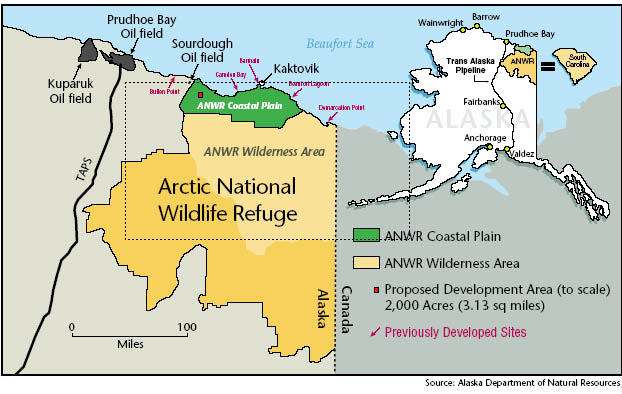Introduction
As the summer of 2005 approaches, memories of California's rolling blackouts and soaring gasoline prices come to mind. These signs lead to an inevitable energy crisis in the very near future. Rather than cut the United States' demand for energy by encouraging other energy sources and technologies to be developed, the Government is advocating an increase in the supply of our energy sources. There are "70 million more drivers on the road driving about 113 million more vehicles today than there were 30 years ago" according to the American Petroleum Institute. This increase in vehicles and drivers obviously leads to a major increase in fuel consumption and need. That is why the Government is striving for alternative oil drilling sources, including those in protected, sensitive ecosystems. Most notably, the Arctic National Wildlife Refuge (ANWR) has been the source of the most conflict between the Government and environmentalists. Alaska’s Arctic National Wildlife Refuge was founded over 40 years ago by President Eisenhower. The wildlife refuge is one of the last pristine areas on earth. Caribou, grizzlies, polar bears, wolves, thousands of birds and countless other animals make the unique area their home. There are distinct benefits and potential dangers inherent in drilling for oil in the refuge; these same dangers and benefits apply to most, if not all, cases involving the drilling of sensitive ecosystems. |
|
John Seward
(John_Seward@baylor.edu)
EGR 3305 - Engineering Ethics
April 24th, 2005
Benefits click to view
This section explores the possible benefits of drilling for oil in sensitive ecosystems as well as the parties that benefit from it.
Dangers click to view
Investigation of the possible dangers and problems with drilling and those who oppose the devastation of protected lands.
Resources click to view
Resources for exploration of issues for and against the drilling for oil in sensitive ecosystems.

